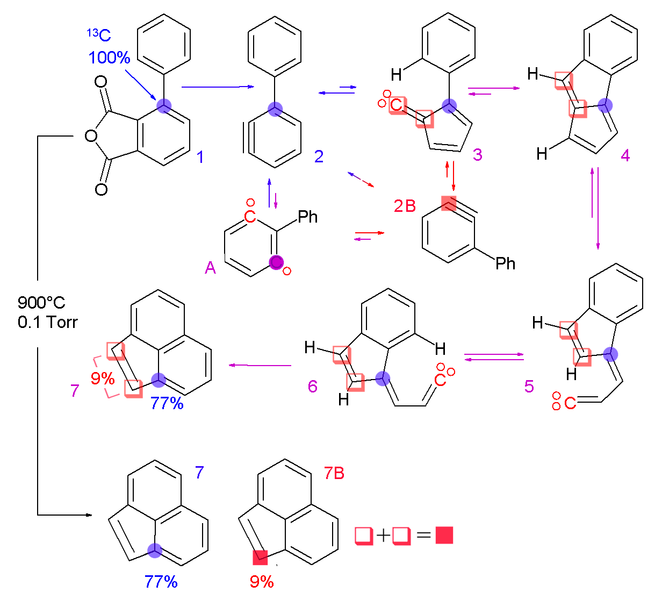Bischler–Möhlau indole synthesis
The Bishler Möhlau - indole synthesis is named a reaction from the field of organic chemistry and chemists after August Bishler and Richard Möhlau. It describes the preparation of indole and derivatives thereof.
Survey
ω -bromoacetophenone can be reacted with aniline in excess of 2- arylindole. Here, water and Anilinhydrobromid be free.
Despite the history of this classic reaction it receives relatively little attention compared to other indole. The reason may perhaps lie in the in contrast to other implementations relatively harsh reaction conditions. At a later time substantially milder methods have been developed, the use of lithium bromide as a catalyst, or the use of microwaves.
Reaction mechanism
Although it is expected from simple starting materials, the reaction mechanism is quite complex.
In two steps, a charged aniline is formed as an intermediate product of two molecules of aniline and one molecule of ω -bromoacetophenone with elimination of water. This can be electrophiles cyclize and form an intermediate. By aromatization and subsequent tautomerism created the desired indole. Depending on a breakaway aniline molecule and hydrobromic case form the Anilinhydrobromid, a salt of the class of Hydrobromide.










